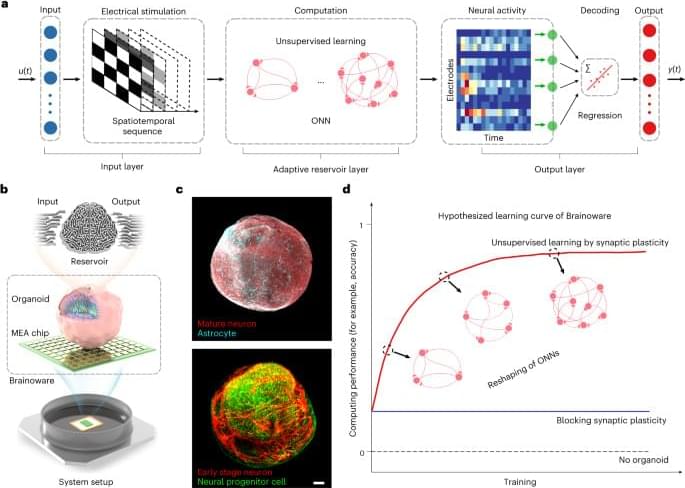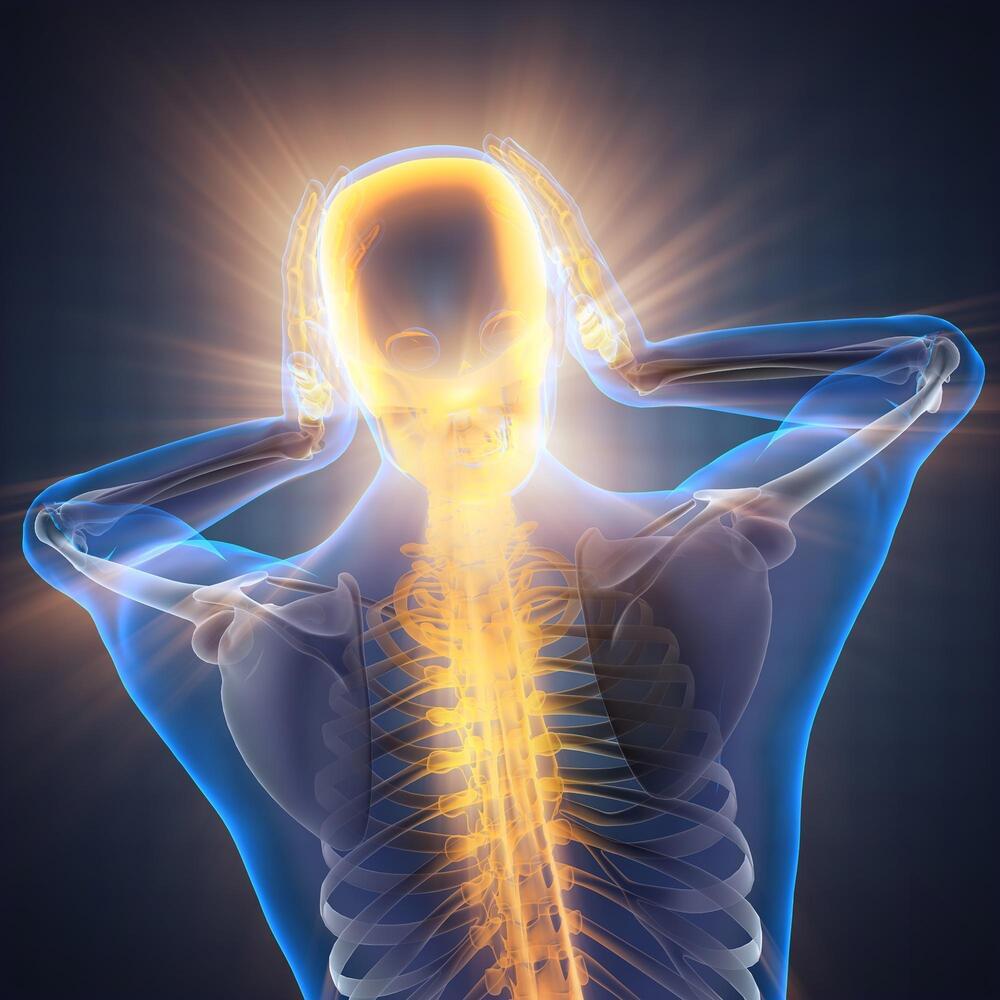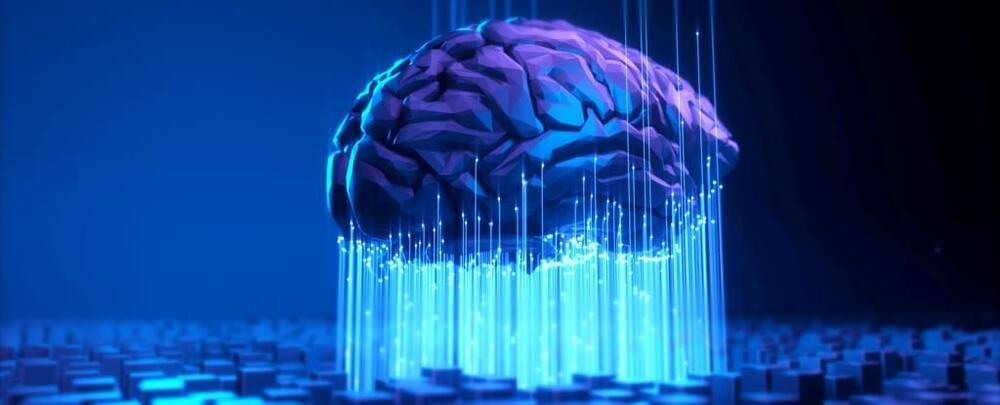A living artificial intelligence hardware approach that uses the adaptive reservoir computation of biological neural networks in a brain organoid can perform tasks such as speech recognition and nonlinear equation prediction.



The ability to accurately detect heat and pain is critical to human survival. However, the molecular mechanisms behind how our bodies identify these dangers have long been a mystery to scientists.
Now, University at Buffalo researchers have unraveled the complex biological phenomena that drive these critical functions. Their research, recently published in the Proceedings of the National Academy of Sciences, has uncovered a previously unknown and completely unexpected “suicidal” reaction in ion channel receptors that explains the complicated mechanisms that underlie sensitivity to temperature and pain.
The research could be applied to the development of more effective pain relievers.
An exploration of the merging of biology, AI and quantum computing and the spooky implications of it. My Patreon Page: https://www.patreon.com/johnmichaelgodi…
In Episode 6 of the Lifespan podcast, Dr. David Sinclair and co-host Matthew LaPlante discuss cosmetic aging and how to improve skin, nails, and hair. They talk about why superficial aging occurs and how external signs of aging are often a reflection of biological age. The latest science behind various beautifying therapies is highlighted, including newer interventions like low-level laser therapy and platelet-rich plasma injections. #DavidSinclair #Longevity #SkinCare T.
In the final episode of this season, Dr. David Sinclair and Matthew LaPlante focus on current and near-future technologies relevant to health and aging. In addition to discussing the utility of wearable sensors and biological age measurements, they highlight innovative research aimed at reversing biological age. The societal effects of therapies that successfully extend healthspan and/or lifespan are also considered. #DavidSinclair #Longevity #Aging
Joe Henrich is Professor of Human Evolutionary Biology at Harvard University and an author. Humans like to think that we’re sovereign individuals with agency over our preferences and actions. But we are also a part of our social environment and Joe has teased apart some fascinating trends which explain how our location and culture have huge impacts on the way we behave, our preferences on everything from dating to work and family life to religion. Expect to learn why the things we consider to be human nature could just be cultural conditioning, the dangerous future if there’s lots of sexless men, how the choice between growing rice and wheat impacts family life, what diplomatic immunity to parking tickets tells us about human nature, how Joe’s lab can use language to archaeologically tell us about social trends from history…
Joyce Benenson is a lecturer of Human Evolutionary Biology at Harvard University who’s research focuses on human social structures and sex differences in competition and cooperation. We’re often told that men are more competitive, more status-driven and more ruthless with rivals for potential mates. In reality doesn’t seem to be true, the difference is that women’s competition takes a more subtle, cynical and sophisticated route to drive away their competitors. Expect to learn how women compete for status, why women exclude more than men, why women who promote an egalitarian world are less charitable than you might think, how you can interfere with a rivals’ relationship without getting caught, the usefulness of gossip as an enforcement mechanism and much more…

Recently, economists and behavioral scientists have studied the pattern of human well-being over the lifespan. In dozens of countries, and for a large range of well-being measures, including happiness and mental health, well-being is high in youth, falls to a nadir in midlife, and rises again in old age. The reasons for this U-shape are still unclear. Present theories emphasize sociological and economic forces. In this study we show that a similar U-shape exists in 508 great apes (two samples of chimpanzees and one sample of orangutans) whose well-being was assessed by raters familiar with the individual apes. This U-shaped pattern or “midlife crisis” emerges with or without use of parametric methods. Our results imply that human well-being’s curved shape is not uniquely human and that, although it may be partly explained by aspects of human life and society, its origins may lie partly in the biology we share with great apes. These findings have implications across scientific and social-scientific disciplines, and may help to identify ways of enhancing human and ape well-being.

Recently, economists and behavioral scientists have studied the pattern of human well-being over the lifespan. In dozens of countries, and for a large range of well-being measures, including happiness and mental health, well-being is high in youth, falls to a nadir in midlife, and rises again in old age. The reasons for this U-shape are still unclear. Present theories emphasize sociological and economic forces. In this study we show that a similar U-shape exists in 508 great apes (two samples of chimpanzees and one sample of orangutans) whose well-being was assessed by raters familiar with the individual apes. This U-shaped pattern or “midlife crisis” emerges with or without use of parametric methods. Our results imply that human well-being’s curved shape is not uniquely human and that, although it may be partly explained by aspects of human life and society, its origins may lie partly in the biology we share with great apes. These findings have implications across scientific and social-scientific disciplines, and may help to identify ways of enhancing human and ape well-being.

Imagine brain scanning technology improves greatly in the coming decades, to the point that we can observe how each individual neuron talks to other neurons.
Then, imagine we can record all this information to create a simulation of someone’s brain on a computer.
This is the concept behind mind uploading – the idea that we may one day be able to transition a person from their biological body to a synthetic hardware.